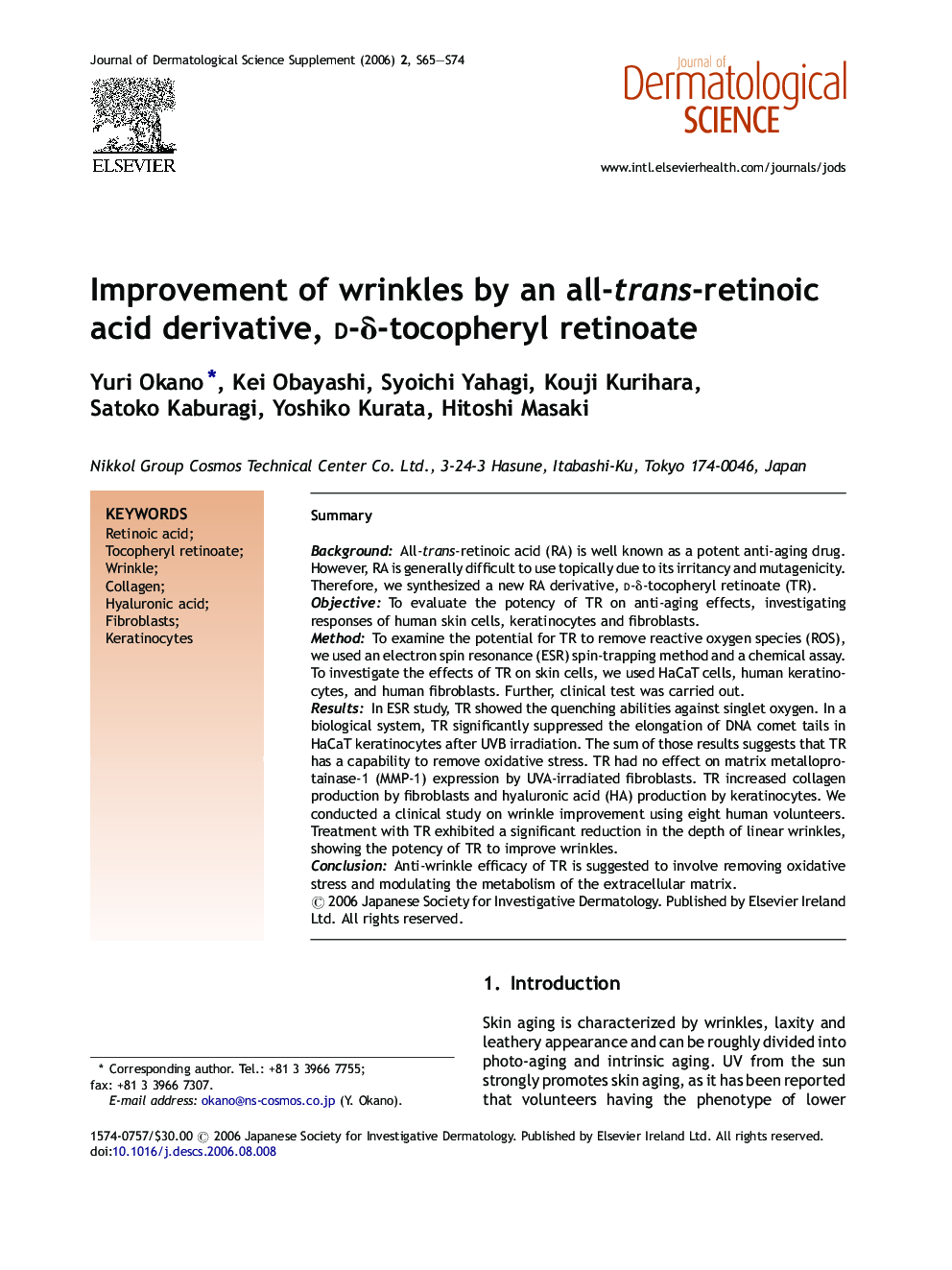| Article ID | Journal | Published Year | Pages | File Type |
|---|---|---|---|---|
| 3214656 | Journal of Dermatological Science Supplement | 2006 | 10 Pages |
SummaryBackgroundAll-trans-retinoic acid (RA) is well known as a potent anti-aging drug. However, RA is generally difficult to use topically due to its irritancy and mutagenicity. Therefore, we synthesized a new RA derivative, d-δ-tocopheryl retinoate (TR).ObjectiveTo evaluate the potency of TR on anti-aging effects, investigating responses of human skin cells, keratinocytes and fibroblasts.MethodTo examine the potential for TR to remove reactive oxygen species (ROS), we used an electron spin resonance (ESR) spin-trapping method and a chemical assay. To investigate the effects of TR on skin cells, we used HaCaT cells, human keratinocytes, and human fibroblasts. Further, clinical test was carried out.ResultsIn ESR study, TR showed the quenching abilities against singlet oxygen. In a biological system, TR significantly suppressed the elongation of DNA comet tails in HaCaT keratinocytes after UVB irradiation. The sum of those results suggests that TR has a capability to remove oxidative stress. TR had no effect on matrix metalloprotainase-1 (MMP-1) expression by UVA-irradiated fibroblasts. TR increased collagen production by fibroblasts and hyaluronic acid (HA) production by keratinocytes. We conducted a clinical study on wrinkle improvement using eight human volunteers. Treatment with TR exhibited a significant reduction in the depth of linear wrinkles, showing the potency of TR to improve wrinkles.ConclusionAnti-wrinkle efficacy of TR is suggested to involve removing oxidative stress and modulating the metabolism of the extracellular matrix.
